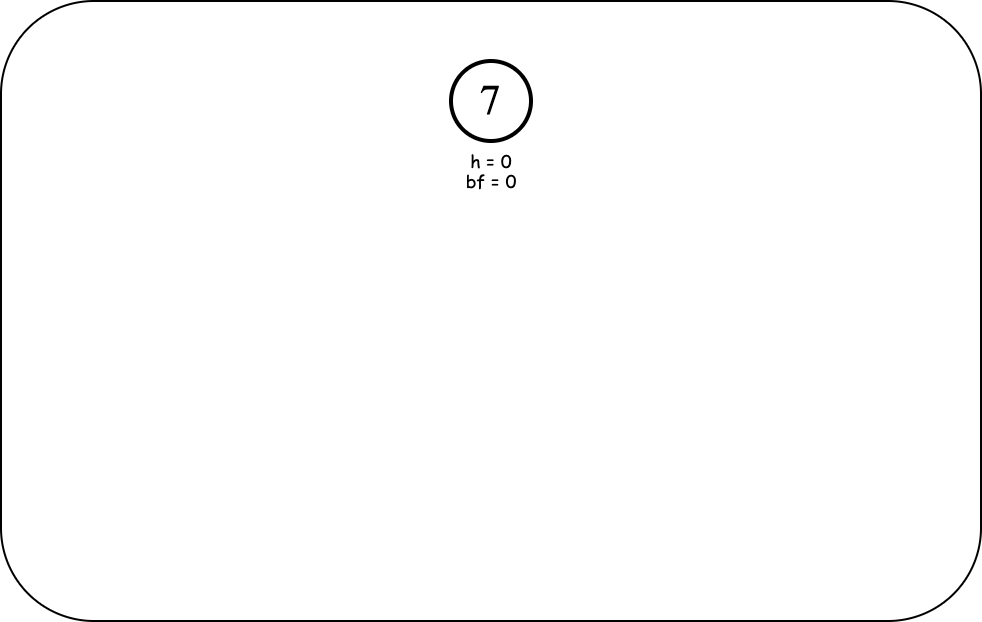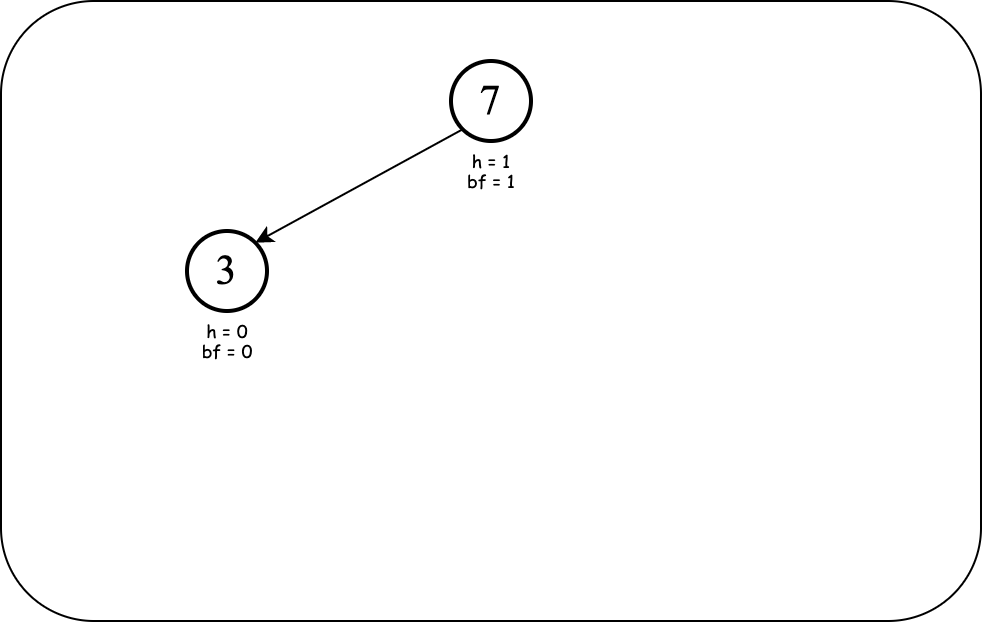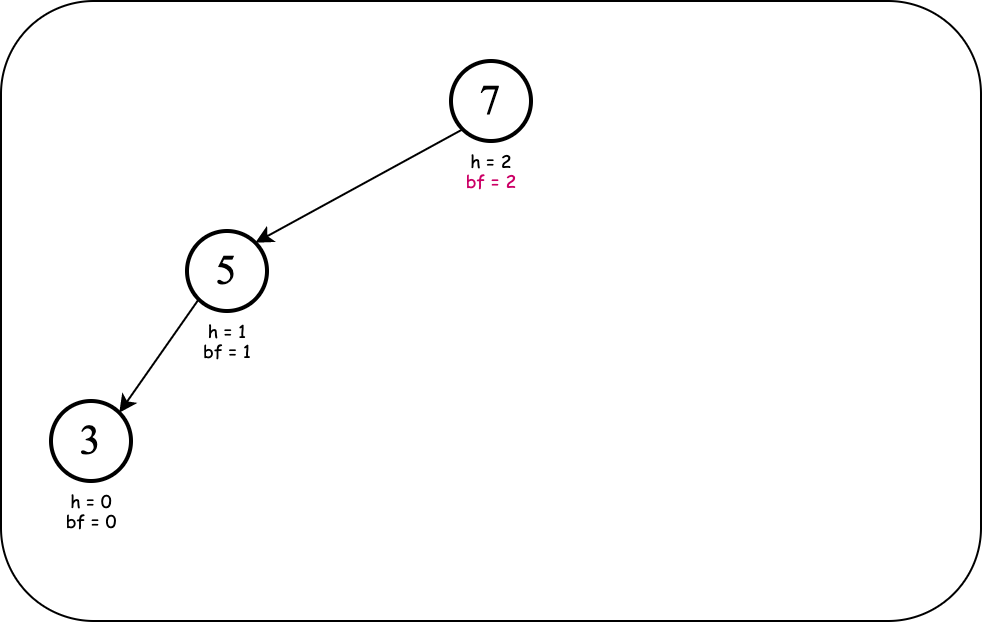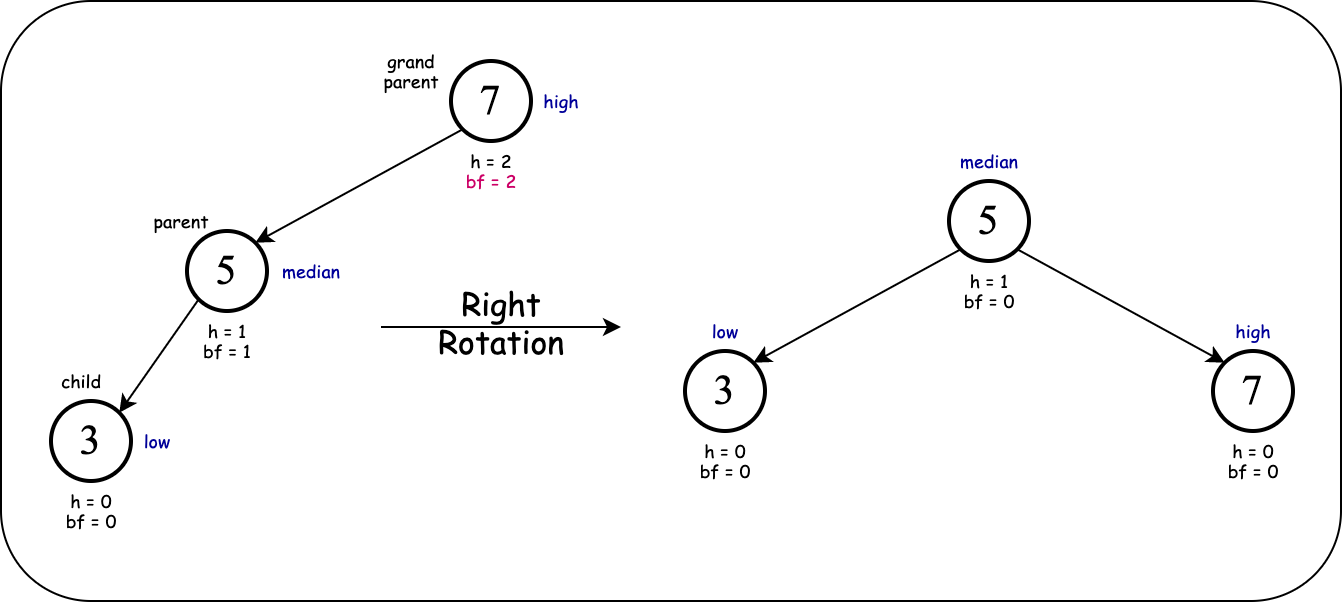Double Rotation: Left-Right
Consider inserting the values $7, 5, 3$ in that order.
We start by inserting $7$:

We have a BST with a single node; it is balanced!
Next, we insert $3$.

Now our BST has two nodes. Notice the height and balance factor of the root has changed (and it is still balanced).
Next, we insert $5$.

Our BST has three nodes now. Notice the heights and balance factors of the parent and grand parent of $5$ have changed. In particular, the grand parent (the root) is not balanced anymore!
No single rotation will fix the imbalance!
However, if we were to push $3$ to the left of $5$, we would transform the structure to a pattern we have seen before:

The above arrangement is a (single) right rotation away from balance

So we perform a right rotation:

As you have noticed, we needed two rotations, first a left and then a right rotation. This is called a (double) left-right rotation.

Notice the violation of balance property occurred in the grand parent of the newly inserted node. From the perspective of the grand parent node, the problem was caused in left child's right subtree. The solution is a (double) left-right rotation to bring the median value above the high and low values.